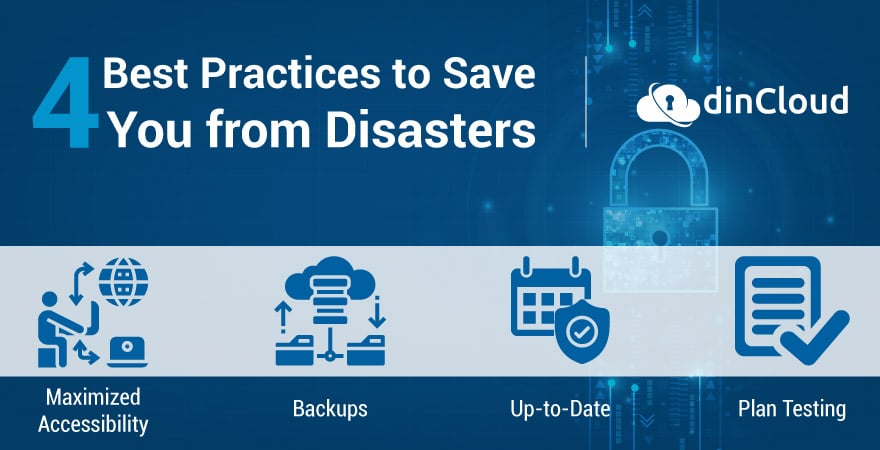A new UK government research from the Department of digital, culture, media and Sports (DSMC) found that 32 percent of businesses running in UK have faced a data-breach or a cyber-attack in their last 12 months.
These days, an organization must be prepared for any kind of a natural or a cyber-attack, which can be facilitated by a Business Continuity Plan. A Business Continuity Plan (Business Continuity and Disaster Recovery) is a detailed process which focuses primarily on resuming a business functionality in the case of a natural or cyber-attack.
Business Continuity and Disaster Recovery are two different strategies to prepare an organization’s IT for natural disasters or cyber-attacks.
What is Business Continuity?
Business Continuity is the capability of having your business up and running while delivering the products/service at all times. It involves the creation and designing of such policies and procedures that makes a business “Always On”.
What is Disaster Recovery?
Disaster Recovery is an organization’s strategy in response to the natural disaster or cyber-attack. It defines how quick an organization can recover from the disaster. This includes copying of the backed-up data, and server and network restorations.
Difference between Business Continuity and Disaster Recovery
Business Continuity and Disaster Recovery fall under the same core strategy for a Business Continuity plan but are different.
- Business Continuity refers to the continuity of a business’s critical procedures and functions during the disaster whereas, Disaster Recovery refers to the restoration of normal business functions and applications after the disaster.
4 Best Practices for Business Continuity and Disaster Recovery

A Business Continuity Plan (Business Continuity and Disaster Recovery) can go down the drain if proper practices are not followed. Business leaders forget the importance of an unexpected disaster event that such events can have a devastating impact on the status and success of their organization. Numerous threat vectors are roaming around and you need to protect your organization against any disaster and prepare a recovery strategy.
Below are 4 best practices for creating a BCDR plan to save an organization from the natural threats or cyber-attacks.
Devise a Plan and Ensure Accessibility
It may take days, weeks or months to establish a plan and deploy the resources needed at the time of crisis. However, all of that effort can become useless if none of it is available at the time of attack. Resources should be stored in a regularly available location preferably in a cloud server, to make sure that at the time of disaster, the components and resources are online.
Build a Copy of Your Data Away from the Original Data Center – Geo Redundant Data Centers
If your primary data center is located in Houston, Texas, then building a data Center in Austin wouldn’t be a good recommendation as a single attack can disable both data centers. Maintain a copy of your original Data at least 150 miles from the original data location to ensure that the data is safeguarded properly. A safe distance from the original data center location will keep one of your data-centers at least up and running to make sure business runs smooth and sound and data and resources can be accessed easily.
Keep the Plan up to Date
Organizations just install new Applications or a systems, and forget to update the BCDR plan. The installation of the new application demands a BCDR update that complies with the safety of that application. The whole business continuity plan can be at risk if it’s not updated. So, the best way to keep yourself saved from any disaster is by integrating the plan into every business decision and keep it updated every now and then as disasters don’t come announced.
Test Your Plan for Authentication
Once the plan is fully developed, testing the plan is as important as its development. Testing verifies the effectiveness of the plan at the time of disaster. This will identify and make the resources understand as in what to do in a real disaster scenario and highlights which areas of the plan need some strengthening. Testing should be conducted at least quarterly to ensure that the plan is updated and working properly.
No one can guarantee a 100% fool proof process or a plan but keeping a check list and following the above practices can make sure that your business survives and keeps running in the event of any disaster and stay ahead of the competition.
If you want to know more about how dinCloud can help develop a BC/DR solution or your business then Request Information or if you know your requirements then Request A Quote.


